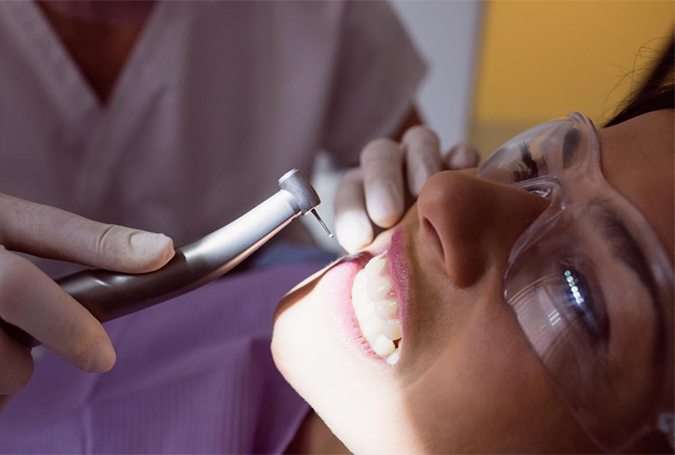At Smile Art Lab, we believe precision and artistry go hand in hand especially when it comes to creating flawless smiles. Injectable composite veneers are reshaping cosmetic dentistry by offering a non-invasive, highly aesthetic alternative to traditional treatments. Designed for dentists seeking advanced techniques to deliver superior results with minimal prep, this approach represents the next step in smile enhancement.
Key Takeaways
- Minimally invasive alternative to traditional veneers
- Ideal for reshaping, aligning, and brightening smiles
- Requires no tooth reduction in most cases
- Offers control, efficiency, and consistency for clinicians
- Completed in a single appointment
What Are Injectable Composite Veneers?
Injectable composite veneers are a direct, additive technique that allows clinicians to sculpt natural-looking teeth using flowable composite resins. Unlike traditional veneers, which require lab-fabricated ceramics and tooth reduction, injectable veneers preserve the natural structure while enhancing aesthetics.
This method involves injecting composite through a transparent silicone index, custom-designed from a diagnostic wax-up. Once light-cured and shaped, the result looks good but far from looking like a porcelain veneer.
Instead of removing enamel, this technique uses a composite material that’s applied and hardened in layers, blending smoothly with the existing tooth. It’s a minimally invasive approach that maintains the natural tooth structure while delivering impressive cosmetic improvements perfect for closing gaps, adjusting minor misalignment’s, or refining the tooth’s colour and shape.
Why It’s Gaining Momentum in Modern Dentistry
The rise in demand for minimally invasive treatments is driving a shift in how aesthetic dentistry is approached. Injectable veneers have emerged as a favourable middle ground between composite bonding and porcelain restorations.
They offer:
- Exceptional marginal adaptation
- Consistent shade control
- Predictable results using mock-ups
- Improved strength with nano-hybrid composites
How the Process Works
The injectable technique follows a structured workflow that enhances predictability and reduces chair time:
1. Initial Assessment & Digital Scan
Clinical examination, photography, and 3D scanning form the foundation. This ensures your design aligns with both facial symmetry and oral dynamics.
2. Mock-Up & Silicone Index Creation
A diagnostic wax-up is fabricated either digitally or manually. From this, a transparent matrix is made, guiding the placement of the composite material.
3. Material Injection & Sculpting
Using the index, the flowable composite is injected into position. This is then light-cured, contoured, and polished to achieve a high-gloss finish that mimics enamel.
4. Final Adjustments
Minor corrections are performed to address occlusion, texture, and shine, ensuring that comfort, function, and aesthetics are preserved in harmony.
5. Benefits of Injectable Composite Veneers
Injectable veneers are more than just a cosmetic trend; they offer clinical efficiency and long-term value. Here’s why dental professionals across Australia are integrating this approach into their practices:
6. Preservation of Enamel
With minimal or no drilling involved, enamel remains intact, reducing post-treatment sensitivity and protecting long-term tooth health.
7. Chairside Efficiency
The procedure is typically completed in one appointment, making it ideal for busy schedules and same-day smile transformations.
8. Predictable Aesthetic Outcomes
Thanks to precise mock-ups and matrix-guided application, clinicians maintain total control over shape, symmetry, and shade.
9. Cost-Effective for Clinicians
No lab fees or wait times, injectable veneers offer a streamlined alternative without compromising on results.
When to Consider Injectable Composite Veneers
This method is particularly well-suited for:
- Minor malalignment or asymmetry
- Diastemas or chipped teeth
- Discolouration resistant to whitening
- Aesthetic correction without permanent alteration
It’s important to note: injectable veneers are not always suitable for cases with significant occlusal wear, severe crowding, or parafunctional habits such as bruxism. Case selection remains crucial.
Benefits for Dentists and Their Patients
The technique offers several clinician-friendly advantages:
- Efficiency: Multiple veneers can be placed in a single session
- Accuracy: The silicone index allows repeatable outcomes
- Aesthetics: High translucency mimics enamel
- Reversibility: No damage to natural dentition
- Affordability: A budget-friendly alternative to ceramic
Clinical Excellence Backed by Science
Studies have shown that modern composites, particularly nano-hybrid and microfilled variants, offer excellent polish retention, wear resistance, and optical performance. With the added benefits of biocompatibility and repairability, they make an exceptional material for additive techniques like these. The Australian Dental Association also emphasises the importance of minimally invasive dentistry, placing injectable veneers in line with evidence-based care that prioritises function and form.
Why Partner with Smile Art Lab?
At Smile Art Lab, we’re not just a lab, we’re a collaborative partner. Our team of experts supports clinicians with:
- Digital smile design
- Digital workflow integration
- Exaclear stents
- On-demand aesthetic planning
Whether you’re new to injectable techniques or looking to refine your workflow, we provide everything you need to achieve effortless, elegant outcomes.
Conclusion:
Injectable composite veneers are reshaping how dentists approach smile design offering efficiency, finesse, and conservation in one sophisticated solution. At Smile Art Lab, we partner with dental professionals ready to bring this modern method to their patients with confidence. Ready to add injectable composite veneers to your treatment portfolio? Contact us today for guidance, support, and superior materials designed for exceptional outcomes.
FAQs
What’s the difference between injectable composite veneers and traditional veneers?
Traditional veneers are fabricated in a lab and typically require enamel reduction. Injectable veneers use flowable resin, applied directly without major prep.
Are injectable veneers long-lasting?
With proper technique and material choice, they can last 5–7 years or more, especially with good patient hygiene and regular maintenance.
Can injectable veneers be removed or replaced?
Yes. As they are non-invasive and additive, they can be easily repaired, modified, or removed without damaging the underlying tooth.
Do they stain like traditional composite fillings?
High-quality composite materials now offer better stain resistance. However, lifestyle habits such as smoking or excessive coffee intake may still affect longevity.
Is the procedure reversible?
Yes. Since there’s little to no enamel removal, injectable composite veneers are considered reversible compared to traditional options.
How long does the treatment take?
Most cases can be completed within a single appointment, depending on the number of teeth being treated.

